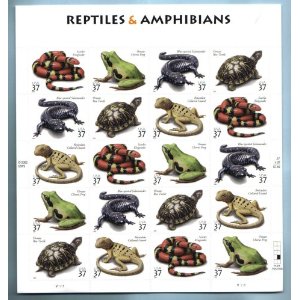Amphibians stand at the forefront of a global biodiversity crisis. More than one-third of amphibian species are globally threatened, and over 120 species have likely suffered global extinction since 1980. Most alarmingly, many rapid declines and extinctions are occurring in pristine sites lacking obvious adverse effects of human activities. The causes of these “enigmatic” declines remain highly contested. Still, lack of long-term data on amphibian populations severely limits our understanding of the distribution of amphibian declines, and therefore the ultimate causes of these declines. Here, we identify a systematic community-wide decline in populations of terrestrial amphibians at La Selva Biological Station, a protected old-growth lowland rainforest in lower Central America. We use data collected over 35 years to show that population density of all species of terrestrial amphibians has declined by ≈75% since 1970, and we show identical trends for all species of common reptiles. The trends we identify are neither consistent with recent emergence of chytridiomycosis nor the climate-linked epidemic hypothesis, two leading putative causes of enigmatic amphibian declines.
Source:
Steven M. Whitfield et al. PNAS, pp. 8352–8356
http://www.pnas.org/content/104/20/8352.abstract

- Log in to post comments
